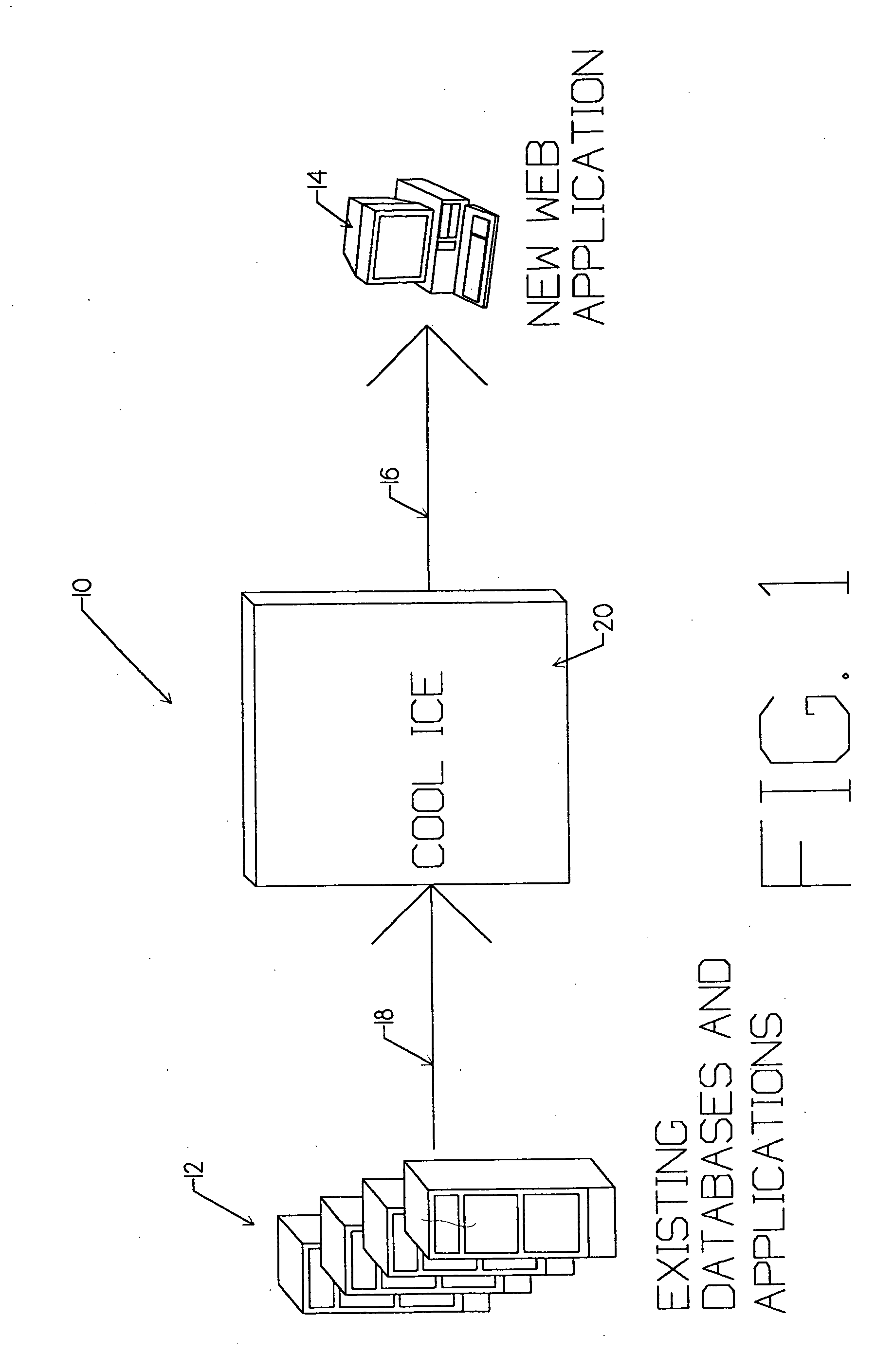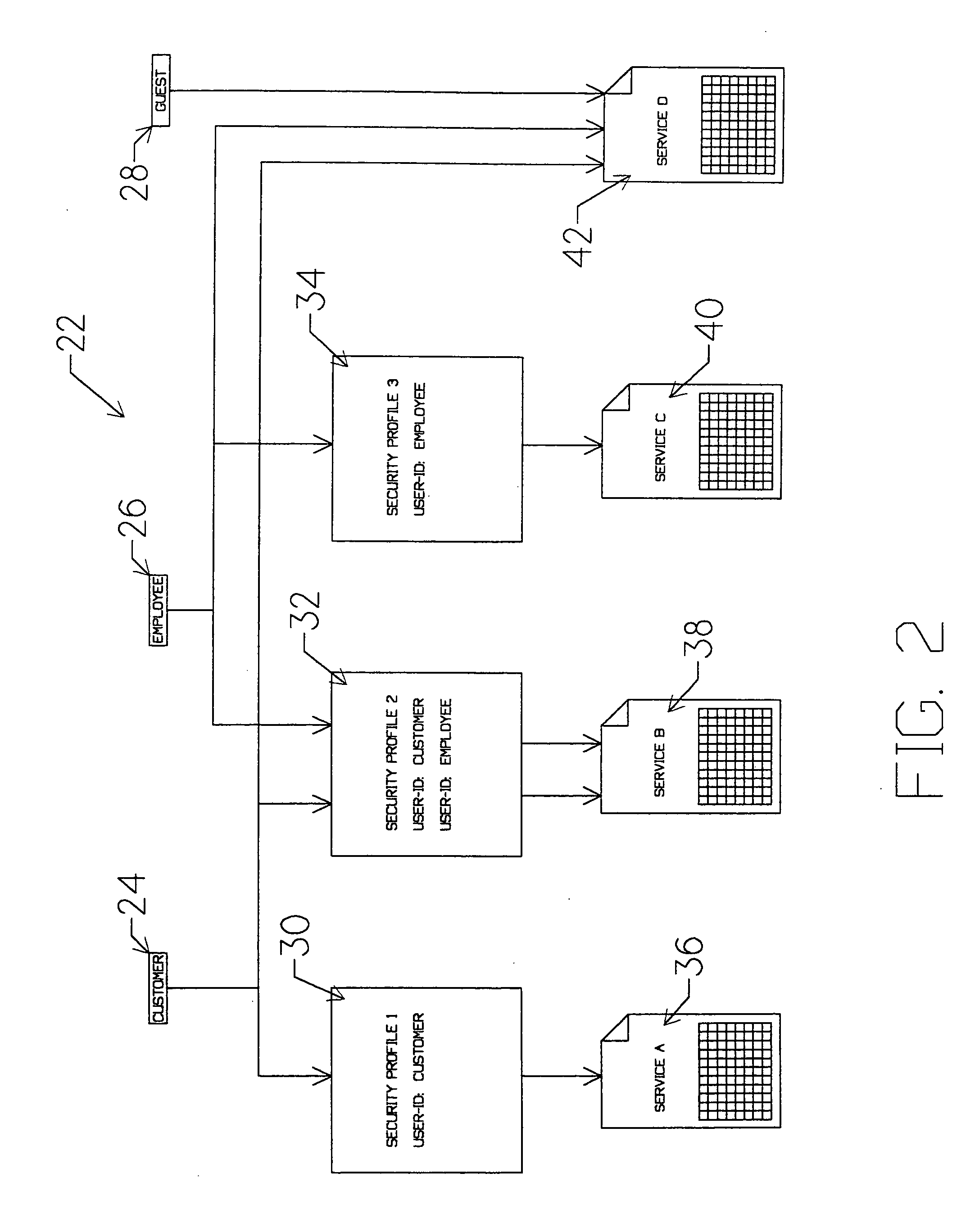Component design by tables within tables
a technology of components and tables, applied in the field of data base management systems, can solve the problems of complex structure, increased security, and virtually unlimited access via the internet, and achieve the effects of easy customization, easy localization, and easy maintenan
- Summary
- Abstract
- Description
- Claims
- Application Information
AI Technical Summary
Benefits of technology
Problems solved by technology
Method used
Image
Examples
Embodiment Construction
[0056] The present invention is described in accordance with several preferred embodiments which are to be viewed as illustrative without being limiting. These several preferred embodiments are based upon MAPPER data base management system, and the Cool ICE software components, all available from Unisys Corporation.
[0057]FIG. 1 is an overall pictographic representation of a system 10 permitting access to a proprietary data base management system via an internet terminal. Existing data bases and applications 12 represents commercially available hardware and software systems which typically provide select users with access to proprietary data and data base management functions. In the preferred embodiment, existing data bases and applications 12 represents one or more data bases prepared using MAPPER data base management system, all available from Unisys Corporation. Historically, existing data bases and applications 12 could only be accessed from a dedicated, direct terminal link, e...
PUM
 Login to View More
Login to View More Abstract
Description
Claims
Application Information
 Login to View More
Login to View More - R&D
- Intellectual Property
- Life Sciences
- Materials
- Tech Scout
- Unparalleled Data Quality
- Higher Quality Content
- 60% Fewer Hallucinations
Browse by: Latest US Patents, China's latest patents, Technical Efficacy Thesaurus, Application Domain, Technology Topic, Popular Technical Reports.
© 2025 PatSnap. All rights reserved.Legal|Privacy policy|Modern Slavery Act Transparency Statement|Sitemap|About US| Contact US: help@patsnap.com



